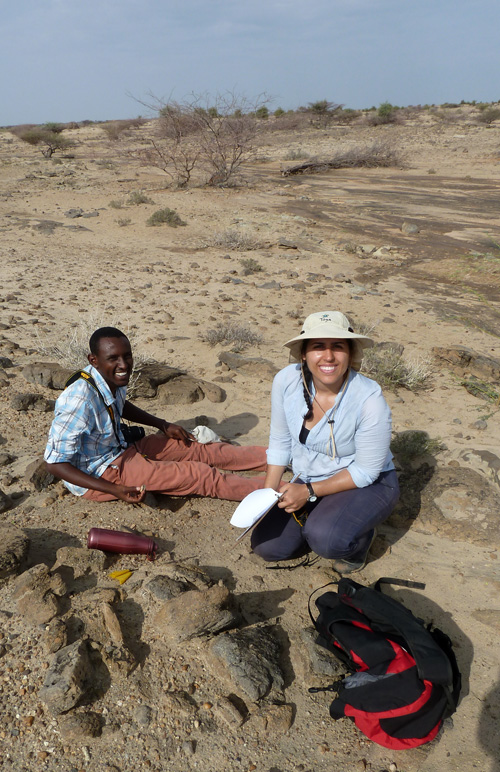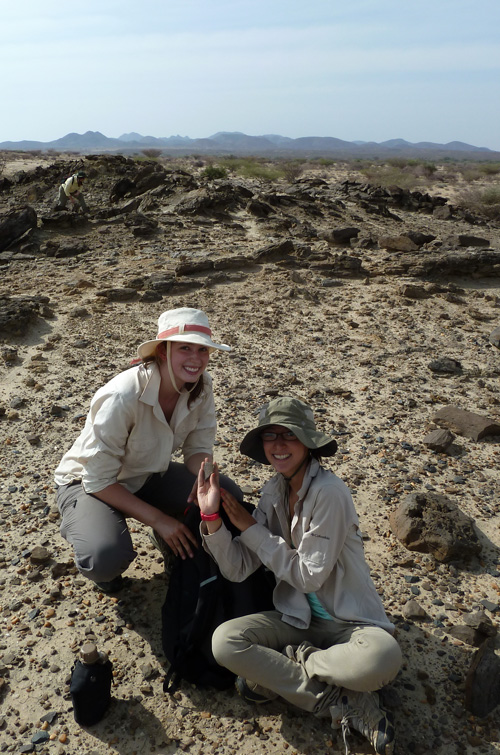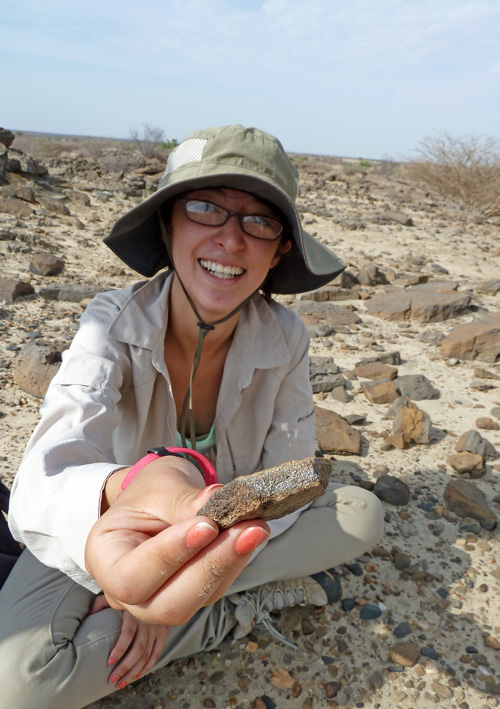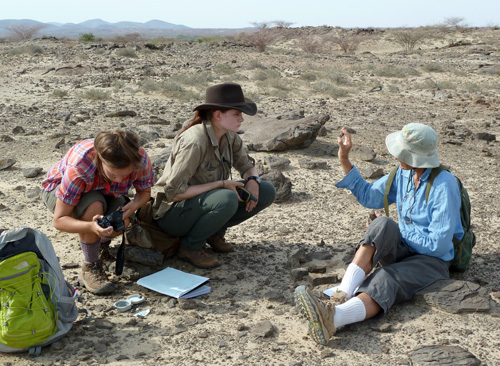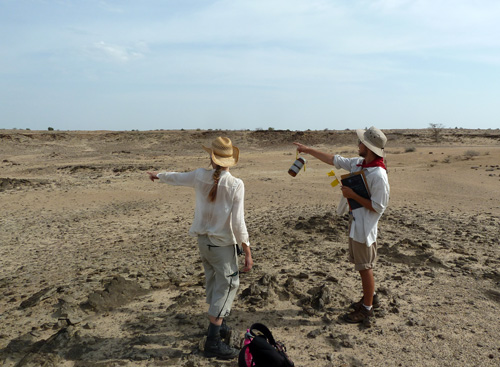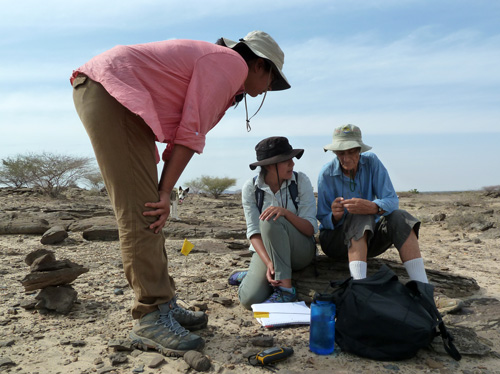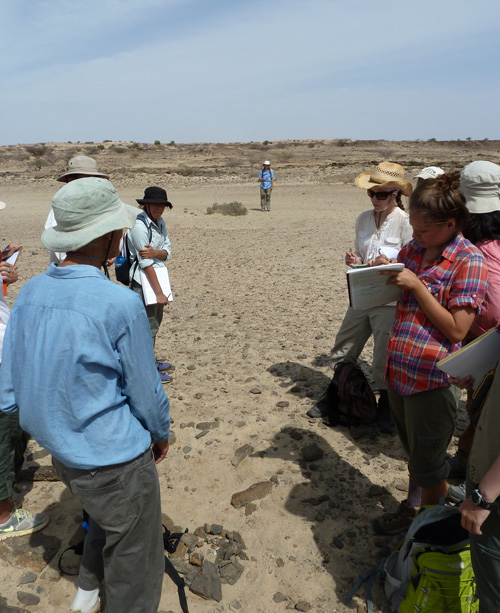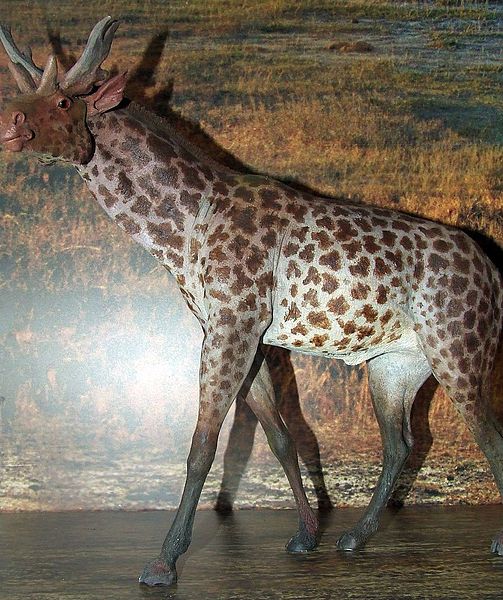The Spring 2014 Field School Vertebrate Paleontology module began this week with Prof. Mikael Fortelius who travelled to Turkana from Finland. Students are being introduced to the diversity and evolution of vertebrates in the Turkana Basin as well as the basic methods involved in searching for, documenting and collecting fossils in the field.
This morning we travelled to some exposures near the Napedet Hills to look for fossils accompanied by Dr Meave Leakey.
The first lesson involved observing the ground closely while moving slowly across it.
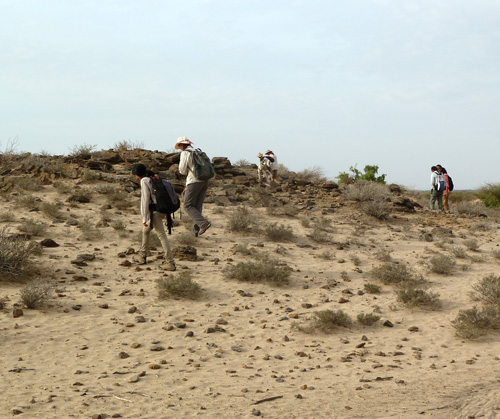
Spring 2014 Students begin the hunt for fossils
Working in pairs, it wasn’t long before the students started to make some finds.
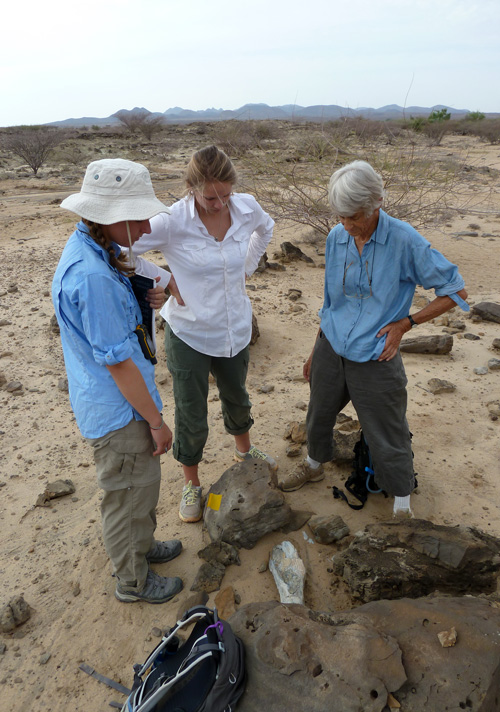
Robyn and Sarah re-discover part of a large animals’ leg bone
Students learned that this site was filled with fossils that were over 3 million years old. This area would have been much wetter and greener at that time, and from the large number of crocodile teeth, remains of turtle shells and hippos, this indicates that this was an ancient lake or river delta teeming with life.
The final part of the field trip involved carefully documenting a site where a few fossils were collected. One of the fossils collected was part of an an ancient animal called Sivatherium, which was a kind of giraffe, similar to the present day okapi, but larger and more heavily built. How amazing to think that these incredible beasts were wandering around Turkana a few million years ago!

